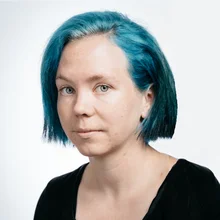
Burden of Proof: Meet the IEX breakaways looking to shake up broker algos
Founded with the principles of “transparency and academic rigor,” some say Proof’s model and technical approach is a test case for a new generation of cloud-native broker startups.
Proof Trading, a startup agency broker-dealer founded by former IEX executives Daniel Aisen and Allison Bishop, is about to launch its second trading algorithm in a bid to deliver more efficient and lower-impact execution.
The firm’s first algorithm, which went live in March, is a VWap (volume-weighted average price) execution algorithm. The second algorithm, expected to go live at the start of August, serves as both a liquidity-seeker and impact minimizer, which first seeks out large blocks of liquidity to execute large chunks of an order against. Once it has picked off large blocks—or if it can’t find any—the algorithm steadily executes trades under the radar to avoid any large impact on price.
“We have historical models about how traditional styles of trading impact price movements, which gives us an idea of the differing levels of risk between trading styles and liquidity,” says Bishop, who is president of Proof. “The result is that the algorithm is constantly reevaluating what is a good way to trade, and the schedule to trade on.”
Reducing execution costs is a key element of Proof’s proposition, yet that’s not an easy thing to quantify. “It would be irresponsible to say, ‘We’re going to save $X in impact costs over other brokers,’ and anyone who does say that is probably lying,” Bishop says.
And that’s not evading the question or taking a swipe at the competition: execution cost is a convoluted issue.

“The Street thinks of agency execution as a commodity—everything is low-touch, and all the brokers have their own, very similar, offerings,” Aisen says. “Execution costs are already a big cost for firms, but they are very hard to measure because this area is a complete ‘black box’ and is very opaque. Once you have a better way to measure these costs, you can start to compare them.”
This “better way” draws on Aisen’s and Bishop’s backgrounds in quantitative research. Traditional transaction cost analysis is a relatively straightforward calculation based on measuring outcomes. The problem, Bishop says, is that traditional TCA lacks context, whereas execution performance can vary wildly based on external factors.
Any firm trying to measure and minimize the impact of its own trades must take into account myriad other factors, such as the movement of other stocks in the same sector, and the activity of other market participants.
“So how do you measure the amount of noise and give context for interpretation, and reduce that noise to improve execution? We do robustness checks and take out some of the data to see if the results are being influenced by a small number of outliers,” she says. “By opening the black box and doing surgery on the prices, you can get higher-quality information compared to just looking at the outcomes.”
Aisen says that what sets Proof apart is its “extreme transparency and scientific rigor.” Indeed, the two go hand-in-hand: Bishop notes that—unlike in finance, where every new development represents a competitive advantage and is kept a closely guarded secret—in science and academia, everything is published and open to peer review, a philosophy that Proof has tried to adopt.
“In the cryptography space [Bishop’s chosen field], you expose encryption protocols to the scientific community over decades,” she says. “So why not have the process of designing and measuring algorithms open and transparent, so you can crowd-source inputs and the buy side can directly assess and contribute to it?”

Brad Bailey, research director for capital markets at Celent, says Proof is “extremely transparent” about its data and the methodology of its algorithms and arrival prices, and it provides transparency into the data, logic and methods through which orders are handled on behalf of their clients.
“Are there firms that want this type of data? Yes! ‘Show me the data’-type discussions are becoming ever-more prevalent,” he says. “There’s a growing need for people to have more detailed transparency. As things like plumbing and black boxes become more sophisticated, the need for greater transparency and understanding becomes more important.”
It’s not a normal approach for an upstart broker. Nor is the fact that Proof’s impact-minimizing model isn’t based on the widely used Almgren-Chriss model developed by Quantitative Brokers co-founder Robert Almgren and former Hutchin Hill Capital founder Neil Chriss. Instead, Proof’s model was built entirely from scratch by Bishop.
But then, there’s nothing normal about Proof. Over the past year and a half, few interactions could be considered “normal,” but the Zoom call with Proof makes one thing clear: this isn’t a cookie-cutter corporate outfit. No logos or fake backgrounds or shelves stocked with impressive-looking yet unread volumes here. Instead, Aisen sits in a small space that resembles an inventor’s toolshed, while Bishop talks about installing a climbing wall in the living room behind her where her Labrador-Retriever dozes on the floor.
Aisen and Bishop co-founded Proof in December 2018, jumping ship from IEX, where Aisen had been a co-founder and head of quantitative strategy—one of the original “Flash Boys” from RBC Capital Markets who set up IEX, along with Brad Katsuyama and others, as chronicled in Michael Lewis’ book. Bishop joined in 2016 as a quantitative researcher.

In March 2019, Han Dong, who had worked in user experience and web design at IEX since 2015, joined Proof in a similar role. Three months later, Prerak Sanghvi and Beau Tateyama joined them—Sanghvi, who had served as lead software engineer then head of ventures technology at IEX, is Proof’s CTO, and Tateyama, who had been a software engineer at IEX, is Proof’s chief software architect.
Proof held off on hiring a head of sales—now Brian Foley, former business development executive at IEX, and a long-time Liquidnet sales manager—until March this year, once it was confident that its proposition was tested and proven.
That proposition runs on Amazon Web Services’ cloud, which Proof chose after a detailed bake off between AWS, Google and Microsoft Azure (in the interests of transparency about its tech choices, the firm explains its decisions here).
It tapped Transaction Network Services as its extranet provider, and for market data, it chose St. Louis-based hardware ticker plant and trading signals vendor Exegy, citing the vendor’s low-latency data delivery and the need for a hosted solution, since the firm couldn’t install specialized hardware or network cards in an AWS-hosted operation. Proof also uses the OneTick database of historical tick data. The system is primarily written in Java, and used the QuickFix/J Fix gateway library.

“Our other founders—Prerak and Beau—have built us an extremely flexible technology platform, running in the cloud, that allows us to iterate and turn things around quicker than firms that have the burden of legacy platforms and costs,” Bishop says.
That could potentially include development of more algorithms over time. Aisen says Proof’s initial pair of algorithms should cover the majority of buy-side needs, but says the firm may consider adding others to address unique workflows raised by clients. However, that doesn’t necessarily mean the firm will build an algorithm for each client need—rather that it will consider client input when defining inputs to its research process, Bishop adds.
The proof of the pudding, they say, is in the eating. And in terms of consumption, it’s still early days: Proof is just onboarding its second client. Its first, New York-based hedge fund Jeneq Management, has been live since the start of this year. But Bailey says Proof—with its model of cloud-based brokerage and transparency—has broader implications for the industry.
“They’re potentially vetting the business case for the next wave of market participants. So a lot of people will be watching this,” he says.
Further reading
Only users who have a paid subscription or are part of a corporate subscription are able to print or copy content.
To access these options, along with all other subscription benefits, please contact info@waterstechnology.com or view our subscription options here: http://subscriptions.waterstechnology.com/subscribe
You are currently unable to print this content. Please contact info@waterstechnology.com to find out more.
You are currently unable to copy this content. Please contact info@waterstechnology.com to find out more.
Copyright Infopro Digital Limited. All rights reserved.
As outlined in our terms and conditions, https://www.infopro-digital.com/terms-and-conditions/subscriptions/ (point 2.4), printing is limited to a single copy.
If you would like to purchase additional rights please email info@waterstechnology.com
Copyright Infopro Digital Limited. All rights reserved.
You may share this content using our article tools. As outlined in our terms and conditions, https://www.infopro-digital.com/terms-and-conditions/subscriptions/ (clause 2.4), an Authorised User may only make one copy of the materials for their own personal use. You must also comply with the restrictions in clause 2.5.
If you would like to purchase additional rights please email info@waterstechnology.com
More on Technology
Latency under the spotlight
Welcome to Latency under the spotlight, a series of three short discussions focusing on latency across the financial services industry from a number of different perspectives. Joining Victor Anderson is Stefan Schlamp from Deutsche Börse.
Managed services under the spotlight
A series of four short podcasts focusing on managed services across the financial services industry
Price check: Is your firm keeping pace with IPV?
How growing regulatory pressure around data is affecting banks’ pricing and valuation control.
DTCC urges affirmation focus ahead of T+1 move
On May 28, large numbers of securities transacted across the North American marketplace will be required to settle one day after they are executed. DTCC is urging all market participants to scrutinize their existing technology and operational procedures,…
Northern Trust: Improving transparency across the asset servicing market
Northern Trust won three categories in the 2023 American Financial Technology Awards. Paul d’Ouville, global head of technology solutions and servicing at Northern Trust, discusses his firm’s fourth consecutive win in the Best reporting initiative…
Finding the investment management ‘one analytics view’
This paper outlines the benefits accruing to buy-side practitioners on the back of generating a single analytics view of their risk and performance metrics across funds, regions and asset classes
A fireside chat with Regnology's Linda Middleditch
Linda Middleditch, chief product officer of Regnology, sits down with Victor Anderson and looks back at what has been a productive year for the RegTech specialist.
Operational resilience using the cloud
This webinar focuses on the business and operational benefits to firms on the back of their cloud strategies, across an industry that is often unforgiving to those not able to guarantee 100% uptime, operational robustness and competitiveness








